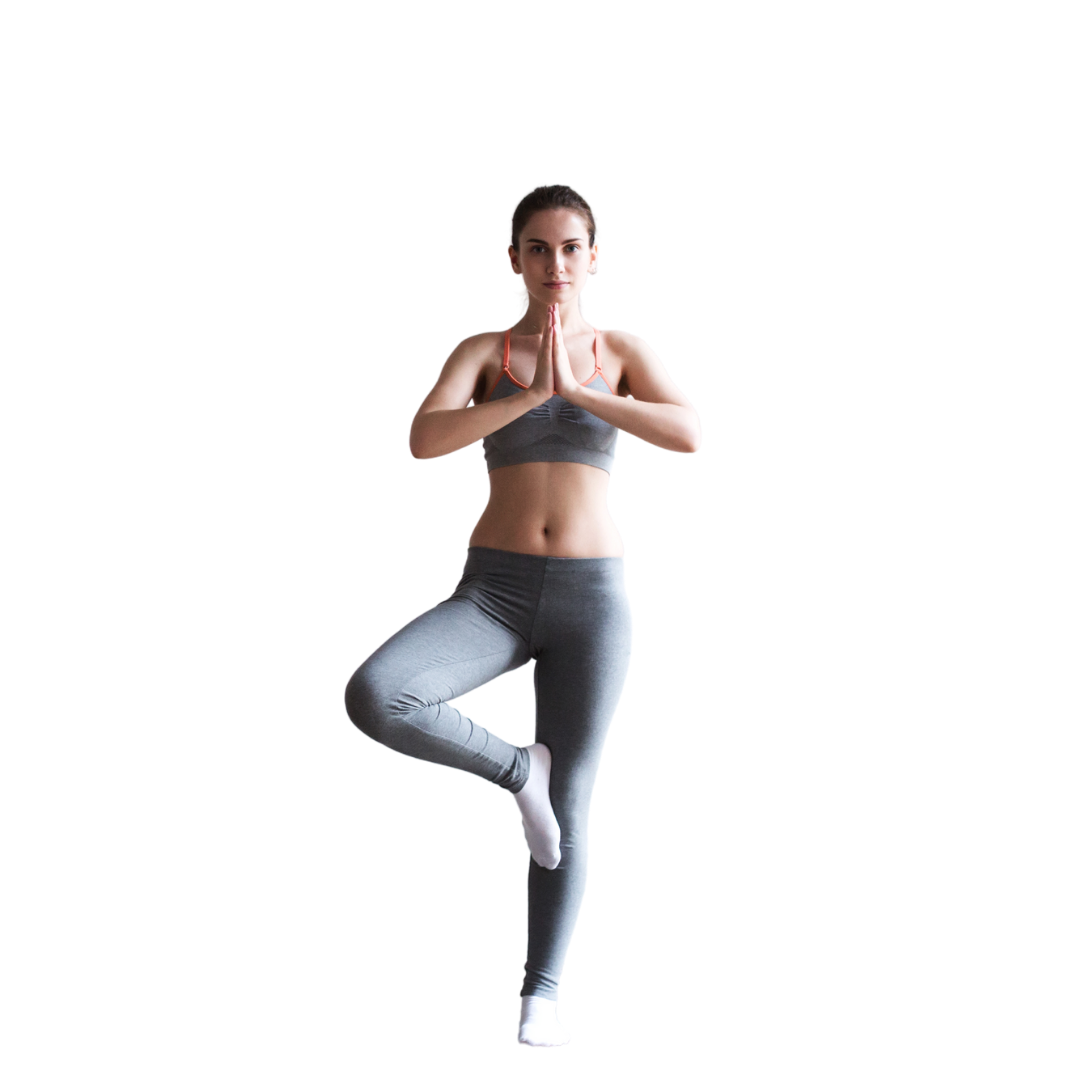Neck Exercise For Thyroid
.png)
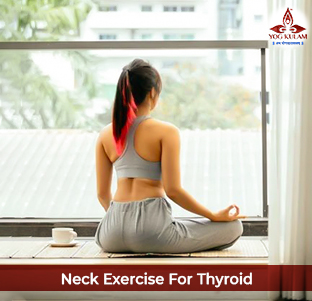
Know the Thyroid Gland and Top 5 Yoga Asanas for it
Table of Contents
Every organ in the human body is interlinked to each organ. What I meant by this statement is the function of the heart cannot be functioned by the lungs and vice-versa.
Still, the functioning of a heart depends on the lungs purifying the deoxygenated blood and again transferring it back to the heart to provide the oxygenated blood to every single organ, tissue, and cell.
Does everyone know what all the things our bodies are made up of? What are the organs that make up a human body? What is the function of every organ? How is everything regulated in the human body? How is each organ interlinked with one another? Can Yoga be helpful for Thyroid deficiency?
Most of you will say yes to the above question, and most of you will say no.
So, our purpose is to educate and help each other continually. Today, let us discuss the thyroid gland.
What is it made up of, where is it located, what are its functions, what are the diseases related to it, and what are the techniques by which we can prevent the disease of the thyroid gland?
Here is the Thyroid Gland Located in the human body
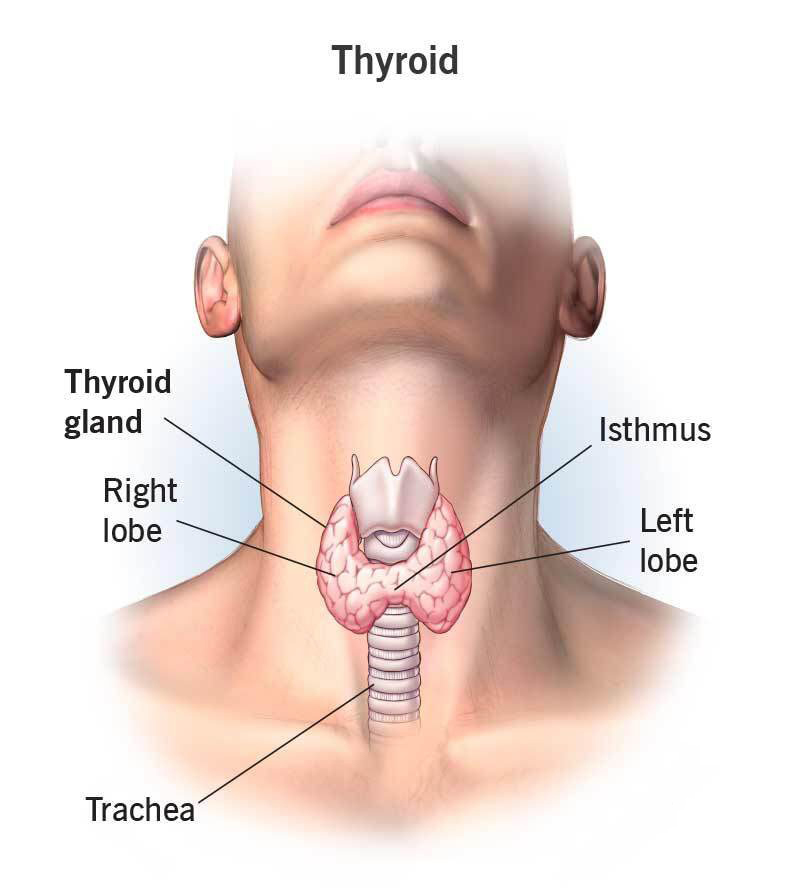
What are the Functions of the Thyroid gland?
Your thyroid gland produces and secretes the following hormones:Thyroxine (T4): This is the main hormone produced and released by the thyroid gland. Although the Thyroid produces most of this hormone, it has little effect on metabolism.
Triiodothyronine (T3): The Thyroid produces less T3 than T4 but has a more significant metabolic effect than T4.
The thyroid gland requires iodine, which is found in food (mainly iodized salt) and water, to produce thyroid hormones. The Thyroid binds iodine and converts it into thyroid hormone.
Too much or too little iodine in your body can affect the levels of hormones produced and released by the thyroid gland.
Thyroid hormones affect the body in the following ways:
1. How your body uses energy (metabolism)
2. Respiratory tract
3. Digestion Body temperature.
4. Brain development.
5. Mental activity
6. Skin and bone care
7. Fertility
Deficiencies That Can Affect Your Thyroid
The thyroid gland uses iodine to produce thyroid hormones, which regulate metabolism, body temperature, and other important functions. When your body doesn't receive enough iodine, it can lead to hypothyroidism, a condition where the thyroid gland doesn't produce enough hormone. However, iodine deficiency isn't the only culprit.Here are some other deficiencies that can affect the Thyroid:
Selenium deficiency: Selenium is another element necessary for thyroid hormone production. Low selenium levels can contribute to both hypothyroidism and hyperthyroidism (overactive Thyroid).
Iron deficiency: Iron deficiency anemia can sometimes lead to hypothyroidism due to its impact on the body's ability to produce thyroid hormones.
Vitamin D deficiency: While the link is still being researched, some studies suggest vitamin D deficiency may be associated with an increased risk of autoimmune thyroid diseases like Hashimoto's thyroiditis.
Biotin deficiency: Biotin is involved in hormone metabolism, and deficiency can potentially interfere with thyroid hormone production.
Can Yoga Help Manage Thyroid Conditions?
So, now we know enough about the thyroid gland. When talking about its treatment, the first and foremost thing is the opinion of a medical practitioner.Visit your doctor, and if they prescribe the medications, go ahead.
The second thing that needs to be done incorporates a few yoga postures that directly or indirectly act on the thyroid gland.
Yoga alone cannot help you cure the disease if it has already happened, but it can balance the thyroid gland if a few asanas are practiced daily.
5 Best YOGA Exercises for Thyroid-
1. UPWARD BOW POSE (Urdhva Dhanurasana)
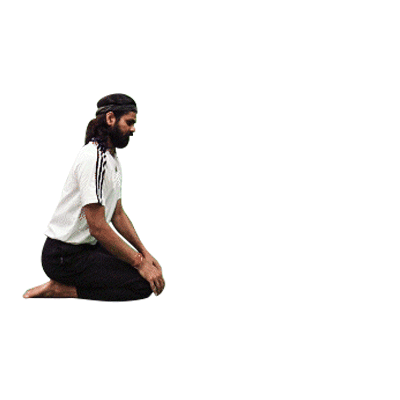
Sometimes called bicycle lunges, they energize by stretching the chest and lungs.
To perform this pose, a person must lie on your back, bend your knees, and bring them close to your body.
Place your hands on the mat next to your head, ensuring your fingers point to your shoulders and your elbows are up. Press your feet into the mat and inhale as you lift your tailbone and glutes.
Make sure your thighs and inner legs are parallel. Press into your legs and arms and lift your head as you exhale.
Press more deeply into your legs and arms, then lift your head completely off the floor until your arms are straight. Spread your shoulders and let your head relax.
Hold the position for 5-10 seconds while breathing deeply. Slowly release from the position, curl your arms, and allow your tailbone and glutes to return to the mat.
Benefits: Upward Bow also stimulates the Thyroid and pituitary glands and strengthens the arms, legs, and spine.
2. HEADSTAND(Sirsasana)
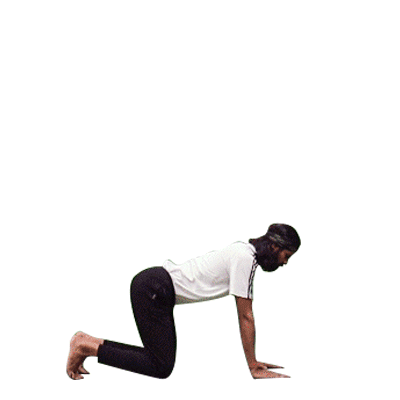
Supported Headstand is one of the most advanced yoga poses and directly affects the thyroid gland. It should only be attempted with prior yoga experience and should be done for the first time under the supervision of an experienced teacher. The Sanskrit name for this pose is Sirshasana. To perform this pose, a person must kneel forward so that your knees and hands are on the mat. Interlace your fingers with your elbows shoulder-width apart, press your inner wrists firmly into the mat, place the crown of your head into the mat, and gently press the back of your head against the palms of your open hands as you inhale.
Now, lift your knees off the mat, walk your feet closer to your elbows, and lift your heels to form an inverted V shape. Raise the shoulders so that the body becomes long and slightly stretched while exhaling, and lift both legs off the mat at the same time; it may be easier to bend your knees during the climb, rotate your thighs inward, push your heels toward the ceiling, straightening your knees. Make sure the weight is balanced between your forearms, and continue to lift your shoulders with your legs fully extended.
Push up through big toes and hold the pose for 5-10 seconds (this can be added for another 5 seconds each time the pose is repeated). As you exhale, slowly bring your feet back to the mat, keeping your shoulders up until both feet reach the mat.
Benefits: The pose helps blood flow to the heart and stimulates the brain's pituitary and pineal glands, which help relieve stress.
3. CAT AND COW POSE (Marjaryasana and Bitilasana)
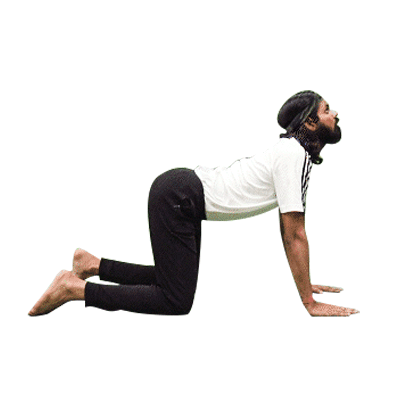
Now, keep your core strong, chin tucked in, and back straight, bending your knees, lifting your feet off the floor if possible, straightening your legs, and straightening your legs so that your legs and body form a V shape. Raise your arms.
So that they are in line with your shoulders, palms should face each other, fingers extended, a deep breath (three), slowly lower your arms and legs, hugging your legs and lowering your head before releasing.
Benefits: It evokes the throat and can be beneficial for the thyroid gland.
4. BOAT POSE (NAVASANA)
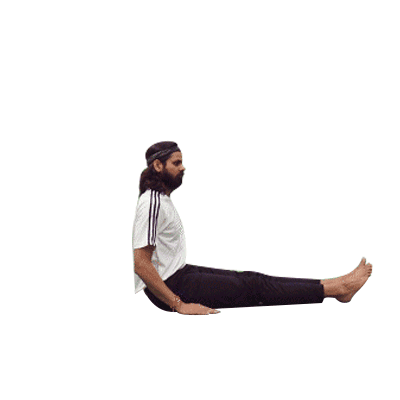
Feel the engagement in your core as you gradually straighten your legs, reaching your toes towards the ceiling for the full expression. Extend your arms parallel to the floor, palms facing down, or rest them on your thighs for support. Breathe deeply and evenly, maintaining the pose for 5-10 breaths or as long as comfortable. Remember, start with Half Boat Pose if needed, and gradually progress to the full version. Listen to your body, and don't force it.
Benefits: It stimulates the throat and can be beneficial for the thyroid gland.
5. FISH POSE (Matsyasana)
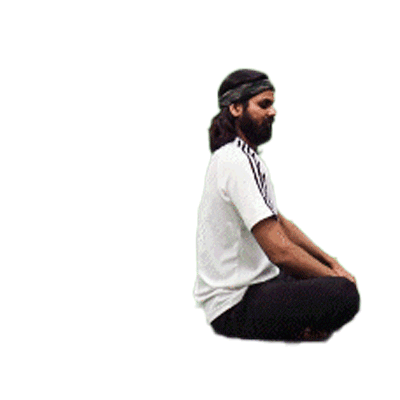
Let your breath guide you, not force. Interlace your fingers behind your back, finding a comfortable resting place for your arms. Release any tension and let go of worry, just like a fish forgetting the cares of the land.
Slowly lower your head back towards the floor, resting it on the mat or a block/bolster if needed. Surrender to the gentle stretch, a wave washing over you. Lengthen your neck and draw your chin slightly towards your chest, opening your throat and chest like a fish greeting the sun. Embrace the space within. Breathe deeply and evenly, holding the pose for 5-10 breaths or as long as comfortable.
Benefits: Matsyasana is a great pose because it stretches the body in the opposite direction.
DIET PLAN LIFESTYLE CHANGES/DIET/PREVENTION
Eating foods that are rich in nutrients can improve overall health and help maintain a healthy weight. In addition, a nutrient-dense diet can help reduce the risk of health conditions associated with hypothyroidism, such as heart disease, obesity, and type 2 diabetes.A high-fiber diet can also help reduce the risk of constipation, a common symptom of hypothyroidism. If you have hypothyroidism, try adding the following nutritious foods to your diet: citrus fruit, brown rice, kidney beans, healthy fats like avocado, full-fat yogurt, berries, etc.
Yoga as A Boon for Achieving Optimal Thyroid Health -
Doing yoga exercises can be really good for your Thyroid. Yoga helps your body and mind work together better. It reduces stress, makes your metabolism better, and keeps you feeling good overall. So, if you want to take care of your Thyroid easily and gently, try doing some simple yoga exercises regularly. It's a nice and natural way to stay healthy.
क्या आप योग में करियर बनाने को लेकर "Confuse" हैं?
Join Free Webinar By Maneesh Sir
- Know About Opportunities in the Growing Yoga Sector.
- Learn from a Yoga Teacher with Over 15 Years of Experience.
- Special Offer for Webinar Attendees.


